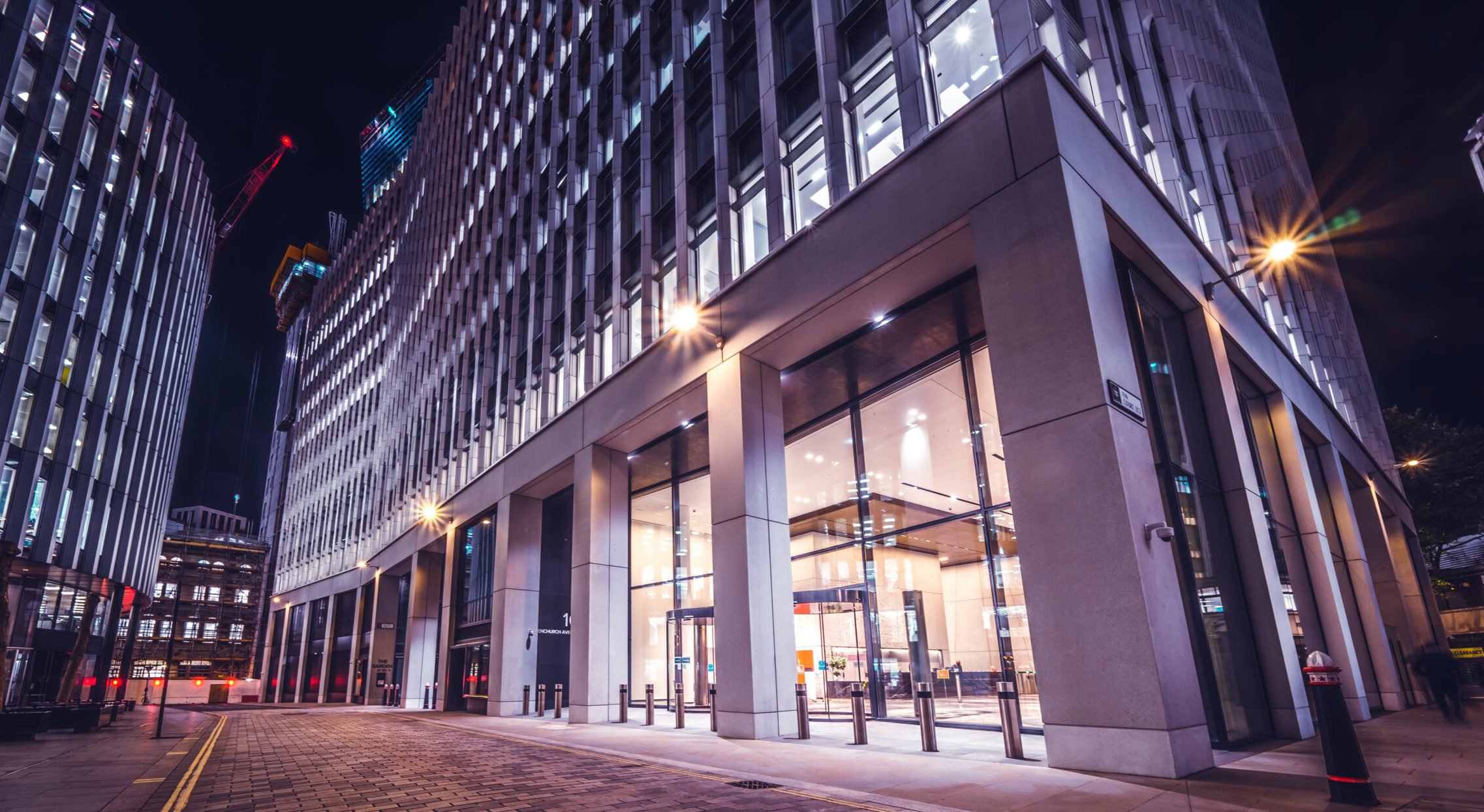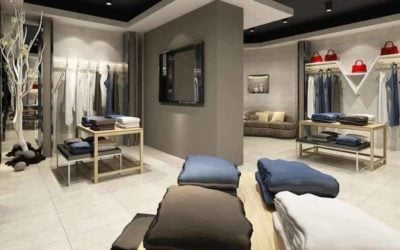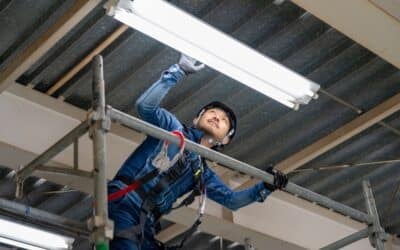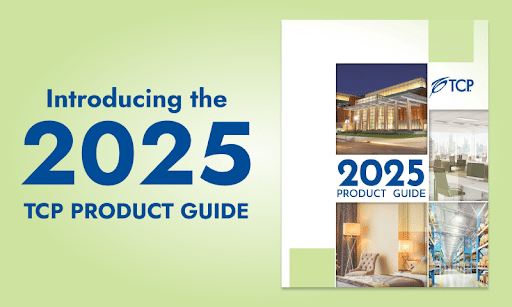HID Replacements
Commercial spaces require constant maintenance. From daily tasks, to ongoing repairs, the projects never seem to stop. It takes a lot of hard work and effort. But it’s all worth it, especially when a job is finished, and everyone loves the end results.
Minor tasks are easy. But major projects are often challenging, especially when budget, labor, and scheduling issues could throw a wrench into your plans. Every large-scale project has pros and cons to evaluate, and questions to ask before starting.
How much will it cost? How long will it take? What are the benefits after completion? Is the end result worth the total expense?
Facilities managers are currently asking these questions about a high-profile lighting job. This project has already impacted hundreds of commercial buildings and sites nationwide, and could affect thousands more. We’re talking about a complete LED replacement of HID bulbs.
This trend started a few years ago, and there are no signs of it slowing down. Large commercial spaces are removing HID (high intensity discharge) lighting, and replacing it with energy-efficient LED (light emitting diode) sources. Why? Because the long-term benefits of LED far outshine the numerous issues, and costs, associated with HID.
Why HID Replacements?
HID lamps and bulbs generate exceptionally bright light. Their high lumen to watt ratio is why they’ve been the primary light source for commercial, industrial, and outdoor applications for decades. Warehouses, stadiums, gymnasiums, parking lots, and large public spaces all use HID lighting.
Despite years of use, their popularity is starting to fade. Consumers are realizing that HID lights use too much energy, and that their lumen output diminishes way too soon.
The technology behind HID comes from centuries-old science. HID lights are classified as electrical gas-discharge lamps, and are one of the oldest types of electrical lights still in use today. They come in four types, based on the chemical compound used in the bulb to generate light. Metal halide is most common. Followed by high pressure sodium, mercury vapor, and low pressure sodium.
HID bulbs produce consistently bright light at first. But as the bulb ages, its effectiveness diminishes. Components within the bulb deteriorate, and more voltage is needed to maintain the same lumen output. The bulb’s quality is compromised, intensity fades, and eventually it stops working.
Time and aging adversely affect HID lumen output. Some types of HID bulbs produce 70% less visible light after just 10,000 hours of operation. When intensity fades, the only way to reclaim the light’s original brightness is by replacing the bulb. With typical use, HID bulbs need to be replaced every two years, or sooner, if you want them operating at full intensity.
Do HID lights have other issues and disadvantages? The answer is yes. Here are commonly reported deficiencies, and reasons why so many HID users have switched to LED.
Long warm-up time Once turned on, HID lights do not reach full intensity until the metallic salts in the bulb evaporate. This waiting period is inconvenient, and why many users now swear by LEDs, which provide light at full power the moment they’re turned on.
Inconsistent light color HID lights degrade as they age, and require extra voltage. This causes intensity to fade, and light color to change. Bright, white light eventually becomes a dim shade of bluish-violet. This type of age-related discoloration does not happen to LEDs.
Wasted energy & harmful radiation Significant amounts of infrared and ultraviolet (UV) energy are produced by HID lights. Infrared is wasted energy because it is not within the visible light spectrum. Excessive UV radiation is harmful, and the reason why HID lamps require UV filters. LED lights do not produce infrared, or UV rays, which makes them more efficient and safe.
Maintenance expense HID lights require frequent maintenance, whether it’s replacing old bulbs, installing new ballasts, or repairing damaged components. Parts can be expensive, and maintenance fees add up. LEDs require significantly less maintenance, which translates to more savings for you.
Versatile LED Replacement Lighting
There once was a time, not that long ago, when HID bulbs were widely trusted as the industry’s best choice for lighting large-scale commercial sites. When LED lights were introduced over 50 years ago, they were expensive, and had limited availability. Due to advances in technology, and improvements in design, LEDs have become widely accessible, and much more affordable today.
What are the advantages of switching to LED?
LEDs have plenty of advantages, but we narrowed them down to the top four. These are the main reasons why many commercial lighting users say they will never go back to HID light sources again.
Longer lifespans – When compared to other common light sources, LEDs produce reliable lighting for thousands of additional hours. LED bulbs can last 2 to 3 times longer than HID bulbs used in the same application. LEDs also retain a high percentage of their original lumen output for their entire lifespan, while HIDs lose almost 30% of their lumen output after one year.
Better energy efficiency – Due to their innovative technology, LEDs produce light without generating excessive amounts of heat. Since LEDs run cooler, they need less energy to produce light, when compared to HID and other light sources. Less energy used, means more money saved. Energy costs can be up to 80% less when you switch to LED.
Unsurpassed light quality – When it comes to the actual light, LED is the clear winner. Better optics with a more focused beam spread, the variety of color temperatures, easier dimming, consistent brightness levels, and 180-degree directionality are just a few LED benefits that HID can’t match.
Less maintenance – Because LEDs perform better, and last longer than most typical light sources, LEDs need far less service during their lifetimes. Fewer replacements, and almost no repairs means spending a lot less, and saving a lot more long-term.
If your commercial property relies on HID lighting, have you thought about upgrading to lighting that’s more energy efficient? If you want a long-lasting, reliable, and worry-free light source, LEDs are all that and more! LED HID-replacement lights may cost extra upfront, but they have an excellent return on investment when you think long-term. Every dollar initially spent should come back because of lower energy bills and fewer repair costs.
Whether you prefer a retrofit, or a complete HID replacement, LEDs can accommodate either option quite easily. An extensive range of sizes and styles ensures that you’ll find LED replacement bulbs that fit perfectly, and coordinate flawlessly, with existing fixtures and surrounding design elements.
LED bulbs have a very high success rate in applications where they replace HID bulbs. Understanding the different applications, and end uses, for your current HID lights will help determine the best LED replacements. A new LED that works in a warehouse high-bay may not be suitable for an outdoor parking lot fixture. Lighting manufacturers have created LED replacements for almost every HID application that exists. As the industry develops new LED options, more solutions are becoming available for unique, and hard-to-fit HID applications.
To make installation easy, and efficient, lighting industry experts have standardized the process. If you want to retrofit HID lighting with LED replacement bulbs, there are three general installation options available. Each one varies in cost and complexity.
Type A Installation: Ballast Compatible
This replacement method is the fastest, easiest, and least expensive. But it could potentially lead to costly repairs, and quality issues, since it relies on the fixture’s existing ballast to operate properly.
For this installation method, the old HID bulb is removed, and the new LED bulb is installed in its place – no rewiring, and no extra labor costs. The new LED bulb, and the ballast, must be compatible. If not, quality and safety issues can develop, and you may need to have the ballast replaced.
Type B Installation: Ballast Bypass & Direct Wire
Contractors recommend this method because end-users almost never report issues after installation, unlike the many ballast-related concerns from Type A install jobs.
For this method, the existing ballast is removed, or bypassed, and the fixture is rewired so electricity flows directly into the socket and LED replacement bulb. This works on 120v and 277v. Because the ballast isn’t needed, you don’t have to worry about it having compatibility issues with the new LED bulb. You’ll need an electrician for rewiring, so labor expenses will be higher than Type A jobs, but the reliability upon completion may be worth the extra cost.
Energy Saving, Budget Saving
As you can see, there’s plenty to gain when you switch from HID to LED lighting. If you’re still unsure that LED HID-replacement lamps are right for your commercial space, take a moment to look at the big picture, and focus on a brighter future.
Maybe you never noticed quality issues with your HID lighting, so you never thought about shopping for a new light source. If you’re satisfied with the lighting your HID system provides, and if you consider them reliable, and dependable, there’s something else that may change your mind.
If you’re looking for additional ways to save money, and maintain more of it in your long-term budget, LED replacement lighting is a brilliant solution. It’s a fact that LEDs use less energy than HIDs to emit the same light output, for the same amount of time. The similarities stop, however, when you compare their monthly energy bills. That’s when you’ll see how different they are.
Your monthly utility bill could be up to 80% less by switching to LED-based lighting. If you do the math, and estimate how much money you could save in 5 to 10 years, this adds up to a significant amount. Take into account all the maintenance that HID lighting typically requires in a similar time period, and estimate that cost. LED lighting needs almost no maintenance, so this expense will virtually go away too, if you decide to go LED.
Based on budget, LED replacements are once again the better choice. The money you’ll save from lower long-term energy bills is a big bonus that’s overdue and well-deserved.
Quality LED Lighting
The LED lighting experts at TCP also know a thing or two about HID. If you have questions about LED replacements for HID bulbs, they’re your best resource. They know an impressive amount of information about HID lighting because they designed and produced TCP’s own line of LED HID-replacement lamps.
Made for energy-efficiency, and maximum luminosity, each LED replacement light from TCP is well-planned, and a perfect substitute for a corresponding HID light source. Every light style, shape, and size is intended for a specific application, or a range of appropriate HID end uses. Most LED replacements are rated for damp usage, have multiple color temperature options, dimming capabilities, and other features that can be customized for specific needs.
Traditional “corn cob” LED replacement bulbs generate light with exceptional brightness, to compete with the best performing HID bulbs on the market. Our corn cobs outperform HID equivalents in energy savings, lifespan, and luminosity – every topic we mentioned earlier. Most will typically last 50,000 hours, which is twice the average HID lifespan.
TCP’s latest innovation, the High Lumen LED Filament Lamps, provide an exact match to traditional HID bulbs. Utilizing the same form factor, these type B LED replacements are lightweight, and do not change the look of your fixture. They also have the great benefit of LED’s energy saving and a 50,000 hour rated life!
A new LED HID-replacement series is now available that offers benefits traditional corn cob styles may not provide. TCP’s T-shapes are directional, and deliver maximum lumens to floor spaces in warehouses, big box retailers, or any large space with high or low bay fixtures. If glare is a concern, these lights each have a plastic lens that helps reduce unwanted glare, while increasing the lamp’s overall performance.
TCP Lighting Manufacturer & LED Innovator
When the time comes to replace your current HID lights, it may be time for a complete change. Instead of going with HID, you should seriously consider LEDs. The advantages of HID retrofit LED bulbs are hard to beat. Our high-quality LED replacements can help you save energy, cut maintenance costs, and boost your long-term budget. They produce light that’s just as bright, or brighter than, most HID lamps.
You can trust us with your lighting questions and concerns. We’ve been in the commercial lighting industry for decades, and have helped thousands of businesses, manufacturers, retailers, and organizations make smarter lighting choices.
We enjoy finding solutions for our customers’ unique lighting needs. As we develop new products, and update existing LEDs with the latest technology, our team is here for you, and ready to plan a more functional, more efficient lighting system that’s designed around you, and your commercial space.
Your brighter, shinier future starts now! Contact us today. We can start planning your LED HID-replacement. Want to get a head-start? Shop products here.







